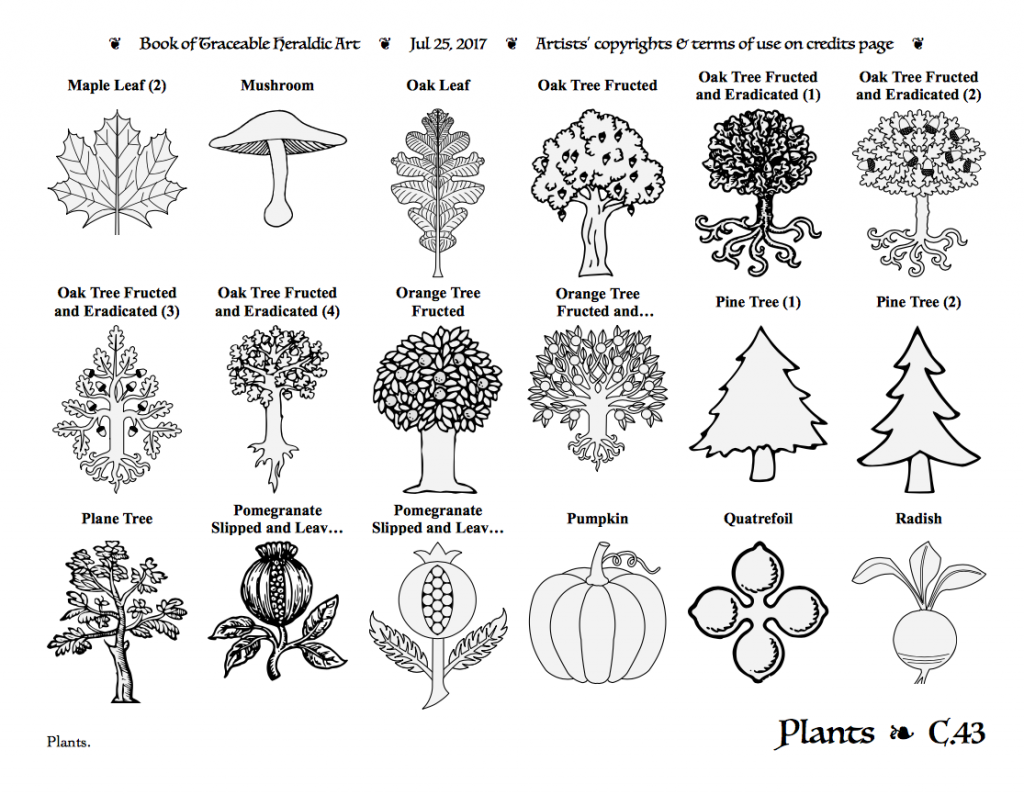I needed some time off after the big push to get the Book of Traceable Heraldic Art into shape for Pennsic, but have made a bit of continuing progress on it this autumn.
We’re now up over 950 pages of traceable illustrations, and should blow past a thousand pages before the end of the year. (It’s amusing to note that at the start of the year I thought a thousand pages was likely to be the end point of the project — at the current rate, we could plausibly reach two thousand somewhere in the next couple of years.)
I’m also working on a new printable “catalog” layout that allows people to easily scan through design elements at a consultation table — it packs most of the tinctures, divisions, and charges into a compact format that’s a bit over fifty pages rather than a thousand.
The catalog layout still needs some cleaning up around the edges — I’m using a Perl script to rearrange the SVGs and metadata from the original document into a series of web pages which are then converted to PDFs via JavaScript and Chrome, which seems kind of jury-rigged but so far seems to mostly work.



